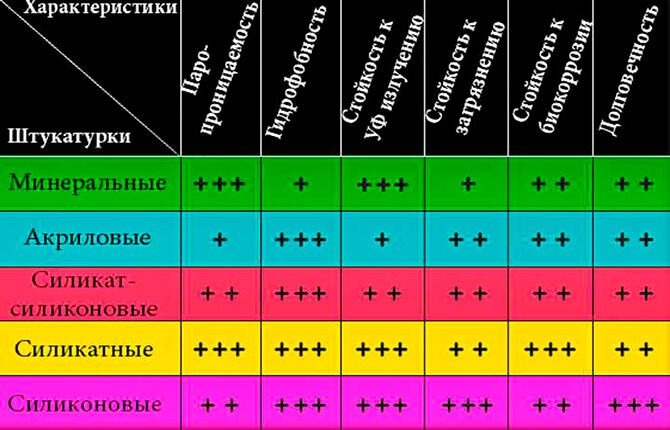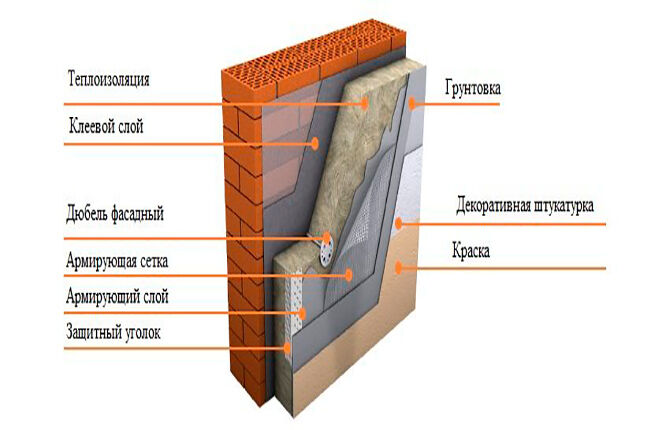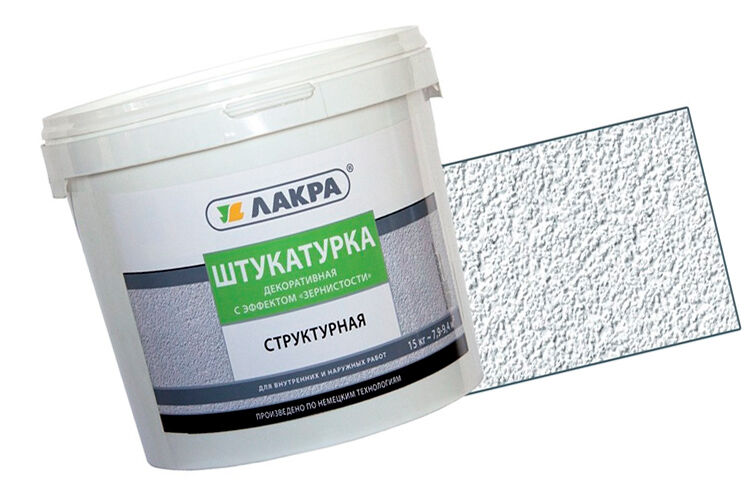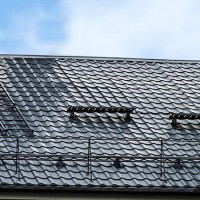Structural plaster for interior wall decoration - useful tips
Decorative structural plaster is a popular finishing material.Using it, you can give your interior walls an original look. The chosen finishing technology, tools, and correct execution of instructions will affect the final result of the work.
The content of the article:
Advantages of structural plaster
Before purchasing structural plaster, you should familiarize yourself with the positive and negative aspects of this material. The advantages include:
- High coefficient of plasticity of the mixture. With its help, you can form a coating on curved, complex-shaped surfaces.
- Long service life. It is increased by additional coating with varnish and other protective solutions manufactured in industrial conditions.
- Strength, ability to withstand strong mechanical stress.
- Virtually unlimited scope of application. Structural plaster is divided into universal compositions and those intended only for interior wall decoration or only for street facades.
- Ability to mask defects on walls.
- Low cost. It allows you to use the plaster mixture as an alternative to standard coatings.
- No restrictions on the shade of the mixture. Add the desired color to it and mix until the desired tone is obtained. You can finish the interior walls with white plaster and then paint.
Structural plaster also has its negative sides. During repair work, the floor and other surfaces must be carefully protected. If splashes get on them and dry, it will be difficult to remove the marks.
The finishing process itself is complex and requires patience and accuracy. Each subsequent layer is applied after the previous one has dried.
Structural plaster application technology
To decorate interior walls with structural plaster, different techniques are used. Technologies differ due to differences in the tools used, as well as the composition, density and quality of the mixture.
Prepare the tool for work:
- special hammer;
- spatulas;
- ladle;
- plumb line;
- level;
- rule;
- trowel;
- rollers;
- grater
When choosing a mixture for interior wall decoration, consider:
- performance properties of the solution;
- adhesiveness index;
- room temperature;
- humidity level;
- type of terrain that will need to be completed.
Preparing the walls
Often, after removing the old finish from an interior wall, you have to deal with potholes, deep depressions, and cracks. If defects can be removed by applying special putties, then they are purchased.
If it is not possible to correct the detected deficiencies, then an internal profile system is installed and sheets of plasterboard are laid. In a room with high humidity, they should be moisture resistant and as thick as possible. This will allow them to withstand plaster mixtures.
If the interior walls are not prepared properly, the structural plaster will take longer to dry and will not gain the required strength. Therefore it is necessary:
- remove all remnants of the old coating;
- eliminate objects that stick out from the wall and interfere with normal finishing;
- level the surface using putty, sanding the hardened layer with sandpaper;
- carry out the primer treatment in two stages with a difference of 4 hours.
The finishing composition will not apply to bare interior walls. It will simply drain; it will be impossible to maintain a certain thickness around the entire perimeter.
Making the mixture
For mixing, study the recommendations on the packaging of the mixture.All proportions are maintained as clearly as possible. Violation of even 100 g will lead to deterioration of adhesive properties and reduced service life.
To mix the mixture use:
- manual or automatic mixer;
- drill with special attachments.
The composition is left for 10 minutes to reach a state of maturity. Before finishing, it is thoroughly mixed again.
Application
Start finishing the interior walls with structural plaster from the top corner and move down.
Finishing involves the formation of three layers. Each has its own purpose:
- Apply a thin layer with a spatula. The surface must be visually divided into several sections. They are processed one by one. Wait 5 hours to dry.
- For the second layer, use a trowel. They make arched, chaotic movements in various directions. The working solution is stretched along the inner wall, excluding gaps. Then leave for a day.
- The third layer is performed using small strokes over an area of 1 m². Leveling is done with a trowel. It should be pressed tightly to the surface. This creates a metallic, stylish shine.
Each finishing material may have additional recommendations for work.
We recommend reading! How to properly putty drywall with your own hands - techniques and recommendations for performing the work in our article link.
Useful tips
There are a number of useful tips that will help you in your work:
- To prepare the workspace, use paper and plastic film. After repair, they are rolled up and sent to the trash container.
- If the finisher does not have experience, then they give preference to classic mixtures of simple ingredients.
- Aqueous solutions cannot be applied to wood surfaces.This will lead to its deformation.
- If there are many defects on the walls, then the consumption of the building mixture increases.
- Do not apply structural plaster on water to metal elements. This will provoke corrosive formations.
- For partial drying of the coating, 4-5 hours are enough, for complete drying it takes 1-2 days. Strength gain occurs in 9 days.
- It is better to purchase structural plaster, which requires water to dilute. It is environmentally friendly and safe in comparison with synthetic analogues.
But the mixture, diluted with water, cannot withstand sudden temperature changes. The coating will gradually deteriorate in the same way as under mechanical stress.
To get the renovation of your dreams without the involvement of experienced craftsmen, whose services cost a lot, you need:
- choose the right structural plaster;
- study application technology;
- prepare space for renovation;
- work with a special tool;
- Remove everything when the process is complete.
These recommendations help prevent serious mistakes during finishing work.
Did you use structural decorative plaster for interior wall decoration? Add the page to bookmarks so as not to lose useful information. Share it on social networks.
We also recommend watching a selection of videos that will reinforce your knowledge and answer any remaining questions.
Types of decorative plaster - types of finishing.
How to apply decorative plaster?
Sources:
- https://stroyday.ru/stroitelstvo-doma/interernoe-oformlenie-doma/dekorativnaya-shtukaturka-sten-svoimi-rukami.html
- http://recn.ru/tehnologiya-naneseniya-strukturnoj-shtukaturki
- https://mr—build-ru.turbopages.org/mr-build.ru/s/dekorativnie-pokritiya/strukturnaya-shtukaturka.html
- https://materialyinfo-ru.turbopages.org/materialyinfo.ru/s/kak-dekorativnuyu-shtukaturku-nanosit-pravilno






